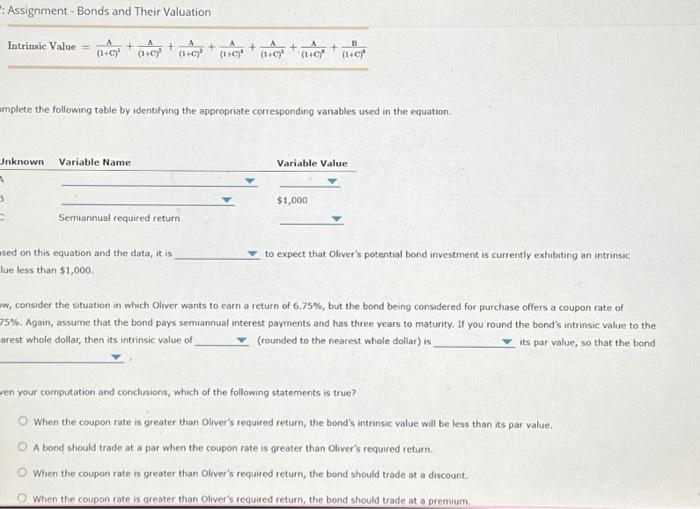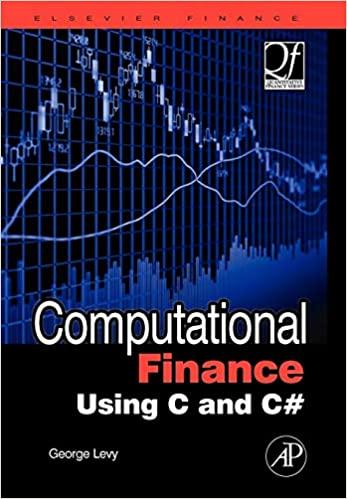The process of bond valuation is based on the fundamental concept that the current price of a secunty can be determined by calculating the present value of the cash flows that the secunty will generate in the future. There is a constient and predictable relatonship between a bond's coupon rate, its par value, a bondholder's required return, and the bond's resulang intrinsic valuet. Trading ot a discount, trading at a premium, and trading at par refer to particular relationships between a bond's intrinsic value and its par value, This also results from the relationship between a bond's coupon rate and a boncholder's required rate of return. Remembec, a bond's coupon rate partially determines the interest-based return that a bond pay, and a bondholder's required return refiects the return that a bondholder to receive frem a uwen imvestinerit. The mathernatics of bond valuation imply a predictable relationship between the bond's coupon rate, the bondholder's required retuin, the band's par value, and its intrinsic valie. These relatonsips can be sumenarized as follows: - When the bond's coupon rate is equal to the bondholder's required return, the bond's intrimuc value will equal its par value, and the bond will trade at par. - When the bond's coupon rate is greater than the bondholder's required return, the bond's minnsic value wall its par value, and the bond will trade at a premium. - When the bond's coupon rate is less than the bondholder's required return, the bond's intrinsic value will be less than its par value, and the bond will trade at For example, assume Oliver wants to earn a return of 10.50% and is offered the opportunity to purchase a $1,000 par value bond that pays a 8.75% coupon rate (distributed semiannusfly) with three years remaining to maturity. The following formuls can be used to compute the bond's intrinsic valies: : Assignment - Bonds and Their Valuation Intrinsic Value =(1+C)2A+(1+C)2A+(1+C)2A+(1+C)2A+(1+C)2A+(1+C)6A+(1+C)6B implete the following table by identifyng the appropriate corresponding variables used in the equation. sed on this equation and the data, it is to expect that Oliver's potential bond investment is currently exhibiting an intrinsic lue less than $1,000. w, consider the situation in which Oliver wonts to earn a return of 6.75%, but the bond being consudered for parchase offers a coupon rate of 75%. Again, assume that the bond pays semiannual interest payments and has three years to maturity. If you round the bond's intrinsic value to the arest whole dollar, then its intrinsic value of (rounded to the nearest whole dollar) is its par value, so that the bond ven your computation and conclusions, which of the following statements is true? When the coupon rate is greater than Oliver's required return, the bond's intrinsic value will be less than its par value. A bond should trade at a par when the coupon rate is greater than oliver's required return. When the coupon rate is greater than Oliver's required return, the bond should trade at a discount








